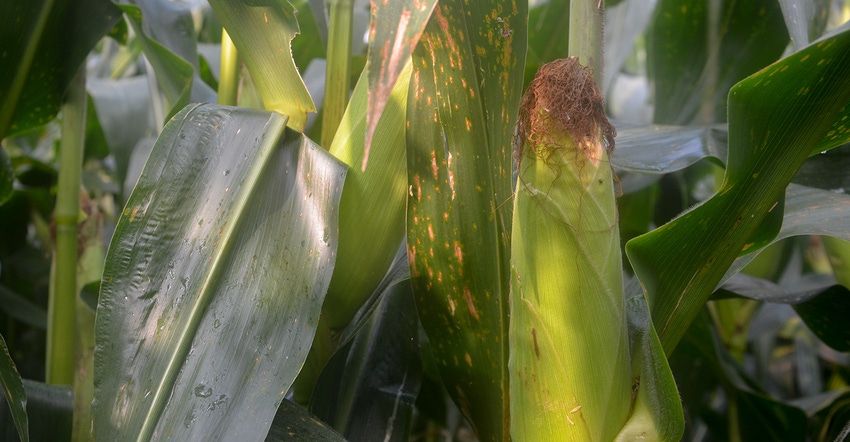
Now is the time to scout cornfields, no matter when you planted them, Dave Nanda says. The independent crop consultant says one thing you’re looking for is whether or not it appears disease will be a threat in each field.
Since planting was so stretched out this year, it may already be past time to visit the earliest-planted fields, Nanda observes. No matter when you planted corn, start scouting each field now, and continue doing so on a regular basis, he advises.
Disease watch
Here are five points to consider when checking cornfields for disease, Nanda says.
1. Which fields should you scout first? Check your earliest-planted corn as soon as possible. Beyond that, check fields with hybrids that are rated as more susceptible to gray leaf spot, northern corn leaf blight and even southern rust than others. These ratings should be available from your seed dealer. Some companies use different rating scales, so make sure you understand which hybrids in your lineup are most susceptible.
2. Which diseases are in a field? Take along the Purdue University Corn & Soybean Field Guide to help determine which disease is causing the most problems. There are good pictures and descriptions of symptoms for each of the major foliar diseases in the guide. You can also purchase a mobile app for $5.99 called Purdue Corn Scout that has the same information, plus more. It allows you to make identifications readily in the field.
3. Which leaves are affected by disease? If only the lower leaves are affected, it’s one thing, Nanda says. If lesions are on the ear leaf, it’s quite another. That is a critical leaf that supports the ear. If lesions have reached the ear leaf and pollination hasn’t occurred or is still under way, you will want to consider spraying soon, he says.
4. How many lesions did you find per plant? Start looking at the lower leaves first. Generally, disease lesions first appear on lower leaves and then move up the plant. If you find a few lesions, you may not be ready to decide on a fungicide application yet. That decision will also depend upon growth stage of the plants. But if you find any lesions, you will want to return in a week or so and check again. If conditions are right, disease can take off quickly.
5. When should you spray fungicide if you find considerable disease pressure? Nanda has changed his thinking on the best time to spray. He once thought at brown silk, but now suggests spraying earlier so you can gain control before the ear leaf is compromised. Purdue guidelines often say spray when pollination is complete. That is typically before silks turn brown. Some fungicide labels specify how soon the product can be applied. Always check fungicide labels before spraying.
About the Author(s)
You May Also Like




